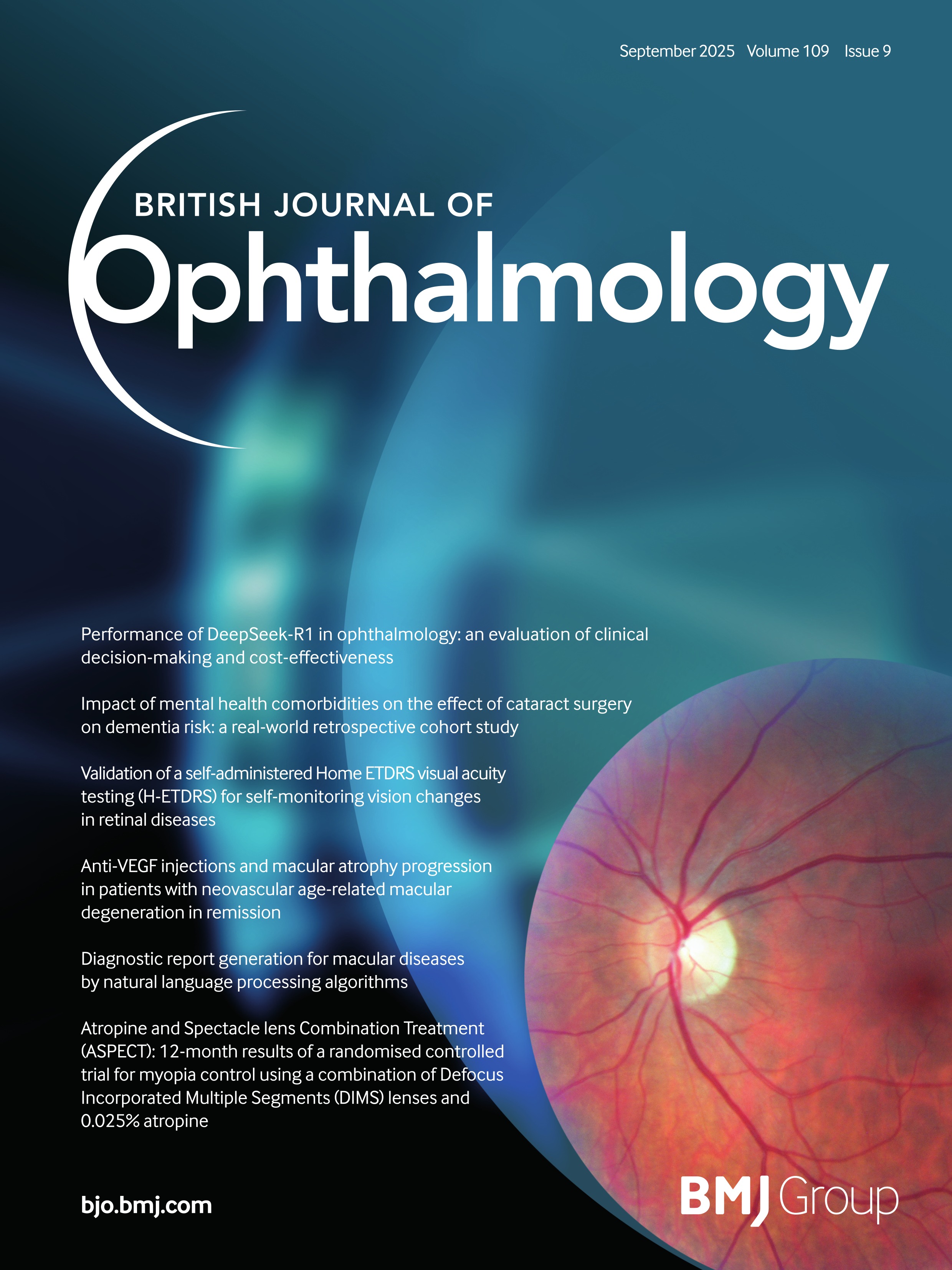3
Dietary omega-3 polyunsaturated fatty acids as a protective factor of myopia: the Hong Kong Children Eye Study
bjo.bmj.comPurpose To evaluate the associations between omega-3 polyunsaturated fatty acids (ω-3 PUFAs) and other dietary factors with myopia.
Methods A total of 1005 Chinese children, aged from 6 to 8 years, from a population-based Hong Kong Children Eye Study, were included in the analysis. Diet was assessed using a validated food-frequency questionnaire. Cycloplegic spherical equivalent (SE) refraction was assessed with an autorefractometer, and axial length (AL) by an IOL Master.
Results AL was longest in the lowest quartile group of ω-3 PUFAs intake, compared with the highest (adjusted mean (95% CI), 23.29 (23.17 to 23.40) mm vs 23.08 (22.96 to 23.19) mm, p=0.01; p-trend=0.02) after adjusting for age, sex, body mass index, near-work time, outdoor time, and parental myopia history. The corresponding trends were observed in SE (−0.13 (−0.32 to 0.07) D in the lowest and 0.23 (0.03 to 0.42) D in the highest quartile groups, p=0.01; p-trend=0.01). In contrast, AL was longest in the highest quartile group of saturated fatty acids (SFA) intake, compared with the lowest (23.30 (23.17 to 23.42) mm vs 23.13 (23.01 to 23.24) mm, p=0.05; p-trend=0.04). The corresponding trends were observed in SE (−0.12 (−0.33 to 0.09) D in the highest and 0.13 (-0.04 to 0.31) D in the lowest quartile group, p=0.06; p-trend=0.04). A lower intake of ω-3 PUFAs was associated with myopia (p-trend=0.006). None of the other nutrients were associated with SE or AL or myopia.
Conclusions Intake of ω-3 PUFAs is a protective factor against myopia, while higher SFA intake is a risk factor. Our findings indicated a possible effect of diet on myopia, of which ω-3 PUFAs intake may play a protective role against myopia development in children.
Data are available upon reasonable request.
You must log in or register to comment.

